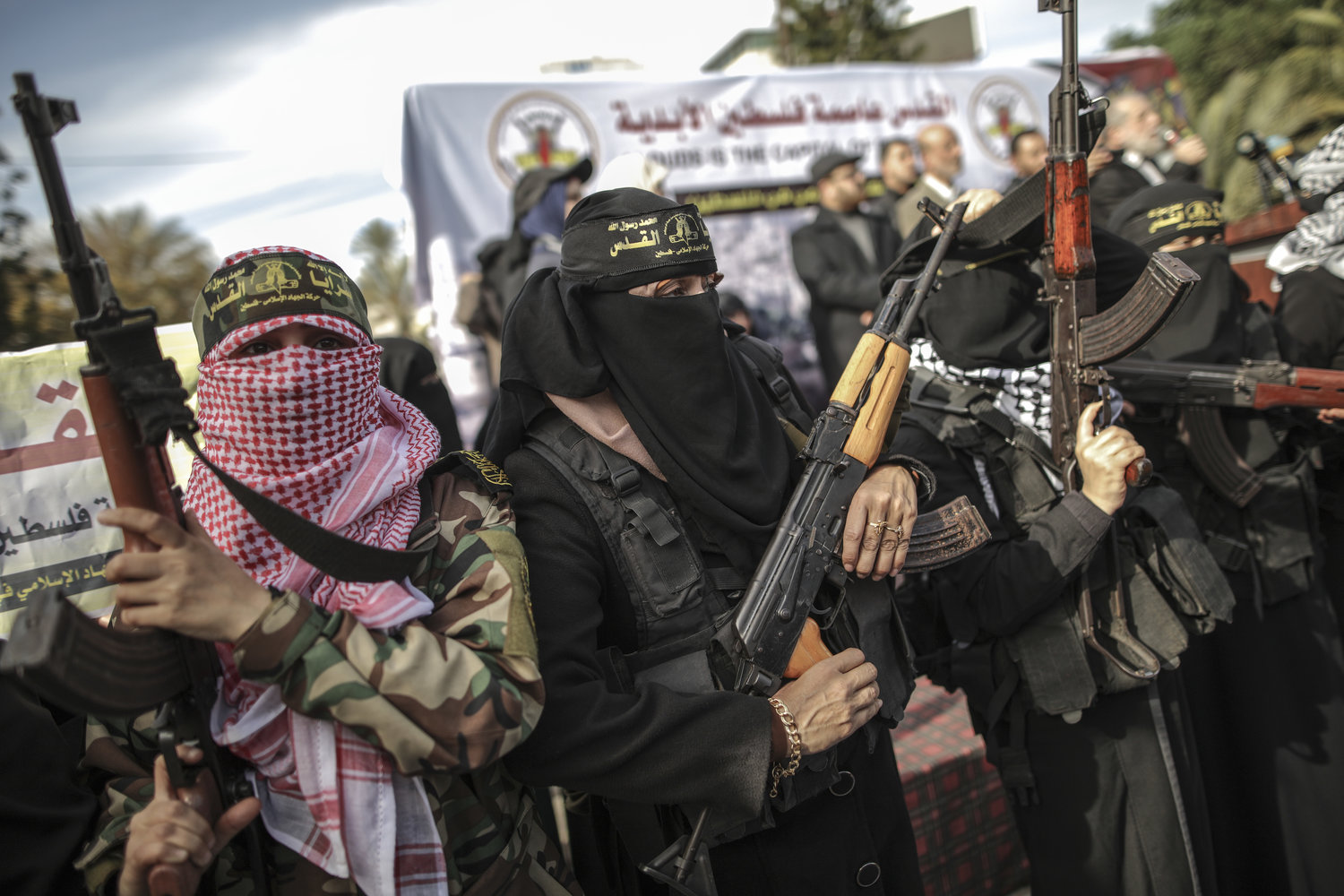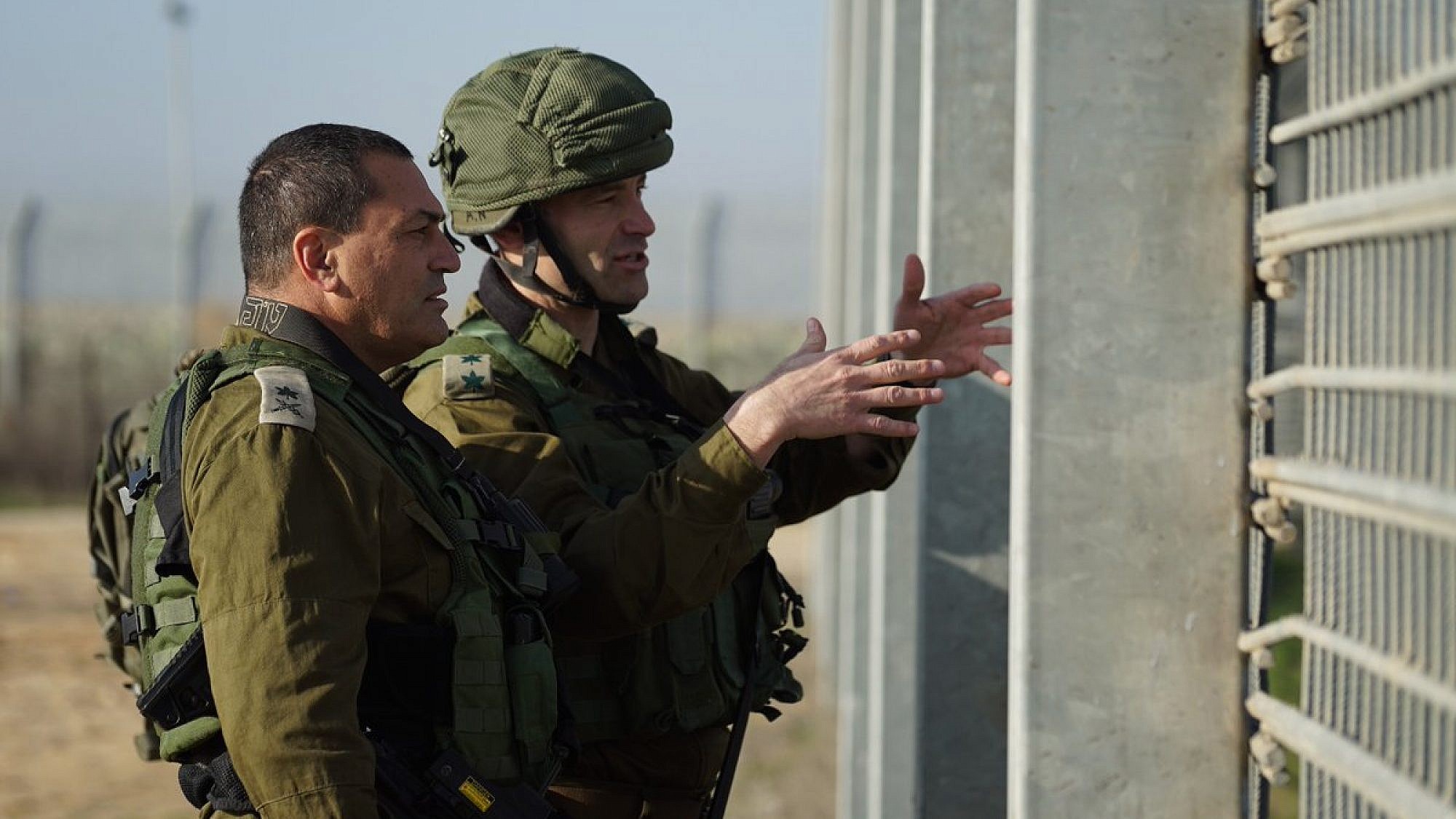The ongoing economic crisis in the Gaza Strip continues to worsen and brings it with the threat of an escalation in the security situation. Funds are drying up for basic services and infrastructure for Gaza’s estimated 2 million residents. And a Hamas-Palestinian Authority reconciliation process, which was supposed to free up cash supplies to alleviate the situation, has stalled.
The increase in tensions led to a flurry of recent Arabic media reports claiming that a large-scale Israel Defense Forces drill in southern Israel held in recent days would lead to an attack on Hamas. Israel’s Defense Minister Avigdor Lieberman dismissed those reports as “disinformation.”
The economic crisis has direct security implications for Israel. A destabilization of the Hamas-run enclave can lead to unrest and chaos, potentially pushing Hamas and other armed terror factions to attack Israel in order to divert attention away from Gaza’s failings and quell internal unrest. That, in turn, could lead to a renewal of mass rocket fire on southern Israel, prompting the IDF to launch a new military operation, despite the fact that no side seeks such a scenario at this time.
Speaking to JNS, Shlomo Brom, a former Israeli deputy national security advisor and a senior research associate at the Institute for National Security Studies in Tel Aviv, said that the scenario of war driven by an economic crisis is not inevitable. He added, however, that Israel has found itself in a complex dilemma.
“The crisis in Gaza already exists. It can get worse. Already, the Gazan population is . . . not receiving basic things—water, electricity, health services. There is no budget to fund these things, mainly because of what [P.A. President Mahmoud] Abbas is doing,” said Brom.
In addition, the P.A. refuses to pay for Hamas’s government employees, while decreasing salaries to its own Gazan employees, who ran the strip before Hamas’s 2007 coup.

Israel has a number of options at its disposal to help Gaza avoid an economic meltdown, thereby preventing armed conflict. Brom said one possibility is to take P.A. tax returns, collected by Israel, and to use the money to pay for Gaza’s electricity bill. Another option, he said, was to directly bridge donor countries to Gaza, circumventing the P.A., which still refuses to pay for Gaza’s services until the P.A.-Hamas impasse is resolved.
“Qatar is willing to pay for Gaza. Of course, this has political ramifications,” said Brom. “Qatar is prepared to do this because it supports Hamas—a Muslim Brotherhood movement—politically. Qatar is ideologically close to the Muslim Brotherhood. Are we prepared to enable such a thing? I think that if things reach an extreme, we should.”
Israel has already allowed Qatar to send suitcases filled with cash to Gaza—money designed for reconstruction projects in the strip, but which also helps Hamas divert more of its own funds to its military build-up program. This, Brom said, illustrates Israel’s dilemma.
Israel can also pressure regional and international players to urge Abbas to renew payments to Gaza even if Abbas does not obtain his demands from Hamas, which center on making it disband its military wing, or placing the military wing under P.A. command.
“Hamas will never agree to that,” stated Brom.
Dr. Col. (res.) Moshe Elad, one of the founders of the security coordination between the IDF and the P.A., said this was not the first time that dire warnings of an “imminent collapse” in Gaza have appeared.
“The truth is that in all of these crises, two elements did not allow the strip to collapse: The U.S. and the European Union (E.U.). Both have a supreme interest in keeping Gaza alive and breathing, even with the known difficulties,” he said.
Now, however, a new situation has arisen, in which the United States is threatening to cut off funding to the Palestinians for the first time since the creation of the P.A. in 1994, either by ending financial support for UNRWA in Gaza or by directly cutting off the P.A.
“Israel can assist the residents of the strip, and it is already doing so in a number of areas,” Elad, currently a lecturer at the Western Galilee College, said. One option is “opening Israel’s gates to workers from the Strip, who will bring in money.”
Yet this is a sensitive issue, and the Israeli government is struggling to make a decision because of security concerns, he added. “Israel already supplies water and electricity but demands payment for this, which is late in coming due to cash shortages,” said Elad. Israel also provides hospital care for Gazans who are sick.
“I’m prepared to take a risk and say that a big crisis will not happen. We will continue to hear about the distress, but not about a humanitarian disaster that will drag all of Gaza’s residents down,” explained Elad. “Everything we’ve heard about recently is aimed at one thing—pressuring Israel to ease the blockade on Gaza, to open its gates to Gazan workers and to forego payments of debts so that Hamas can divert its funds for bigger goals.”
‘We don’t have to rush into this’
In recent days, IDF Chief of Staff Lt.-Gen. Gadi Eisenkot presented his own assessment of Gaza, describing it as “perhaps being the most complex sector” that the military must contend with. Unemployment stands at 47 percent, he said, while residents get four hours of electricity a day. The water quality is “very low,” cautioned Eisenkot.
These factors forced Hamas to seek reconciliation with the P.A., but they have also created instability. Smaller Gazan armed terror groups have increased their rocket fire on southern Israeli regions. Although not a single Israeli civilian or soldier has been injured near the Gaza border in the past three-and-a-half years, and southern communities are flourishing, Israel absorbed more than 20 rocket attacks in the past five weeks. “We can’t accept this,” said Eisenkot. “There are rebellious organizations with an interest in dragging us into a Gaza conflict. We are on high alert. We don’t have to rush into this, but if we do enter [a new conflict], the IDF has the best tools.”
In recent days, Lieberman also revealed new details on Hamas’s funding, noting that the terror organization spent $260 million in 2017 on digging combat tunnels and manufacturing rockets in Gaza’s domestic weapons factories.
“Out of that money, $100 million came from Iran. The rest came from taxes on Gazans and donations from various sources. $260 million went to their military wing—none went to water, electricity, health or education,” said Lieberman.
Prof. Eyal Zisser, a Middle East expert from Tel Aviv University, told JNS he believed that an economic collapse in Gaza is ultimately inevitable.
This is “due to the fundamental reality, in which the Hamas regime gives preference to building its military power, and does not create the conditions for lifting the blockade, or for reintegrating the Strip’s economy with the Palestinian and Israeli economies,” he said.
“All Israel and the rest of its partners can do is to give the basic problem a pain killer – a temporary cash flow and assistance. But these won’t solve the problem, they’ll only delay it. And then, in a month, or half a year, we will again find ourselves facing fundamental, severe trouble [in Gaza].”


























